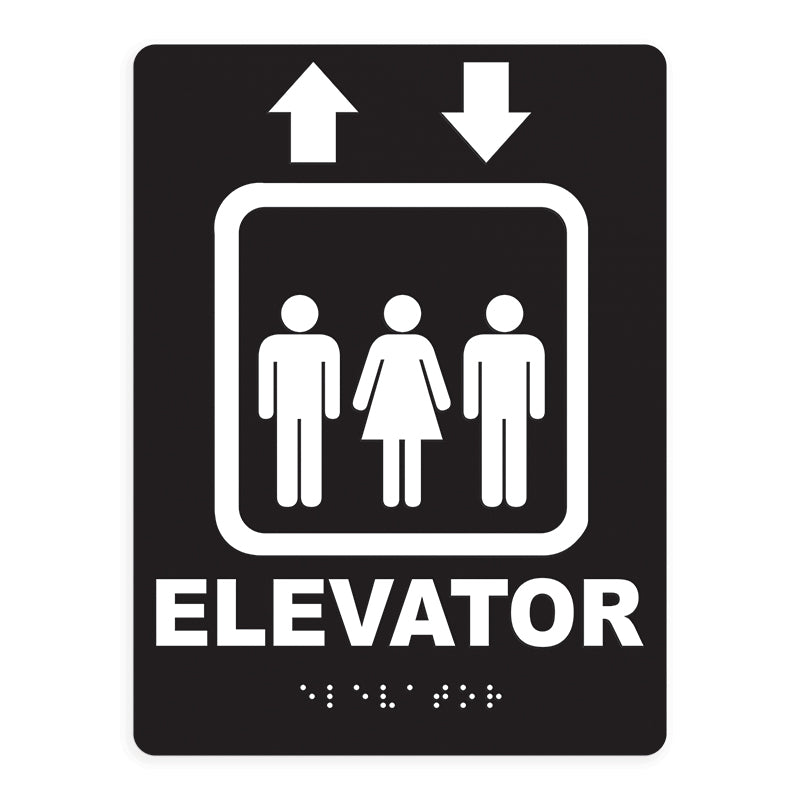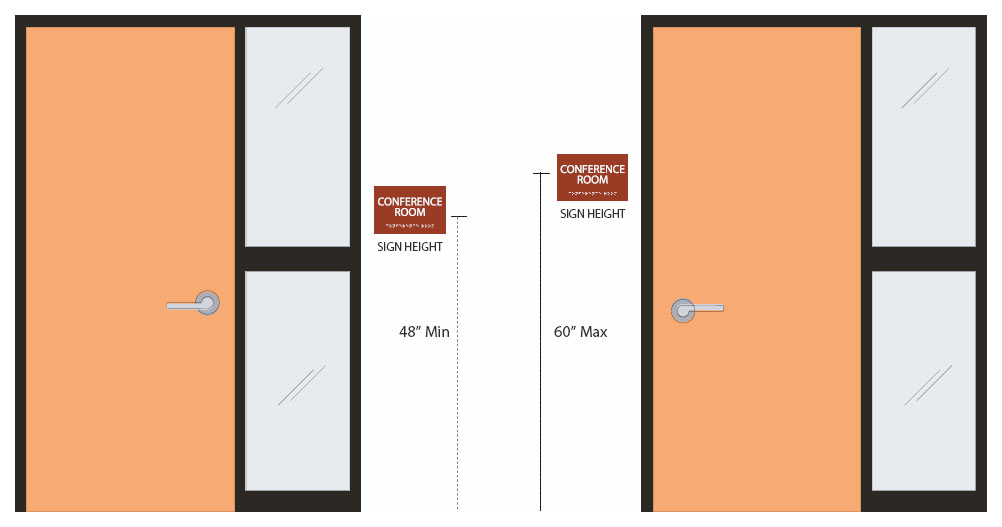Recognizing the Rules Behind ADA Signs
Recognizing the Rules Behind ADA Signs
Blog Article
Exploring the Key Features of ADA Indications for Enhanced Access
In the realm of accessibility, ADA signs offer as quiet yet powerful allies, making sure that areas are inclusive and accessible for individuals with handicaps. By incorporating Braille and tactile aspects, these indicators break obstacles for the aesthetically damaged, while high-contrast shade schemes and legible fonts accommodate diverse aesthetic requirements. Their critical positioning is not arbitrary but instead a calculated initiative to assist in seamless navigating. Past these functions exists a deeper story regarding the advancement of inclusivity and the continuous commitment to developing equitable areas. What more could these indicators symbolize in our quest of global availability?
Significance of ADA Compliance
Guaranteeing conformity with the Americans with Disabilities Act (ADA) is important for cultivating inclusivity and equivalent gain access to in public rooms and offices. The ADA, established in 1990, mandates that all public centers, companies, and transportation solutions accommodate individuals with impairments, guaranteeing they appreciate the same legal rights and possibilities as others. Compliance with ADA requirements not just meets lawful obligations however likewise boosts a company's reputation by showing its commitment to variety and inclusivity.
One of the key facets of ADA conformity is the implementation of available signage. ADA indicators are created to guarantee that people with disabilities can conveniently navigate through structures and areas.
Additionally, sticking to ADA guidelines can mitigate the danger of legal effects and prospective fines. Organizations that stop working to conform with ADA guidelines might deal with penalties or suits, which can be both monetarily challenging and harmful to their public photo. Thus, ADA conformity is indispensable to fostering a fair environment for every person.
Braille and Tactile Aspects
The consolidation of Braille and responsive elements right into ADA signs symbolizes the concepts of availability and inclusivity. These attributes are vital for individuals who are aesthetically damaged or blind, allowing them to navigate public rooms with greater self-reliance and confidence. Braille, a tactile writing system, is essential in supplying created information in a format that can be easily viewed via touch. It is generally positioned below the corresponding message on signs to ensure that individuals can access the information without aesthetic help.
Tactile aspects extend beyond Braille and consist of increased symbols and personalities. These parts are made to be discernible by touch, allowing individuals to identify area numbers, restrooms, leaves, and various other critical areas. The ADA sets details standards relating to the size, spacing, and positioning of these responsive components to enhance readability and guarantee consistency throughout various environments.

High-Contrast Color Pattern
High-contrast color pattern play an essential role in enhancing the presence and readability of ADA signage for people with visual problems. These plans are important as they take full advantage of the difference in light reflectance in between text and history, guaranteeing that signs are conveniently discernible, even from a range. The Americans with Disabilities Act (ADA) mandates using certain color contrasts to suit those with restricted vision, making it a crucial element of compliance.
The efficacy of high-contrast colors exists in their ability to attract attention in various lights conditions, consisting of dimly lit atmospheres and locations with glare. Generally, dark message on a light background or light text on a dark history is employed to accomplish check that ideal comparison. As an example, black text on a yellow or white background gives a stark visual distinction that assists in quick acknowledgment and understanding.

Legible Fonts and Text Size
When thinking about the layout of ADA signage, the selection of legible fonts and suitable text size can not be overemphasized. These elements are important for making certain that indicators come to individuals with visual disabilities. The Americans with Disabilities Act (ADA) mandates that font styles should be not italic and sans-serif, oblique, script, extremely ornamental, or of uncommon type. These demands assist make sure that the text is easily understandable from a distance and that the characters are distinguishable to varied target markets.
According to ADA guidelines, the minimal message height should be 5/8 inch, and it needs to enhance proportionally with viewing range. Consistency in message size adds to a cohesive aesthetic experience, aiding people in browsing atmospheres efficiently.
In addition, spacing between lines and letters is important to legibility. Ample spacing avoids personalities from appearing crowded, boosting readability. By adhering to these criteria, designers can dramatically improve availability, making certain that signs offers its intended function for all people, despite their visual capacities.
Effective Placement Approaches
Strategic placement of ADA signage is necessary for taking full advantage of access and making certain conformity with legal requirements. ADA guidelines stipulate that signs should be mounted at a height between 48 to 60 inches from the ground to ensure they are within the line of sight for both standing and seated people.
Additionally, signs have to be positioned nearby site link to the latch side of doors to permit very easy identification before access. This positioning helps individuals situate spaces and spaces without blockage. In situations where there is no door, indications ought to be positioned on the nearby nearby wall surface. Uniformity in sign placement throughout a center improves predictability, decreasing complication and enhancing overall customer experience.

Verdict
ADA indicators play a vital role in promoting availability by incorporating functions that deal with the demands of individuals with impairments. These components collectively cultivate a comprehensive atmosphere, underscoring the value of ADA compliance in ensuring equal access for all.
In the world of availability, ADA signs offer as quiet yet effective allies, guaranteeing that areas are comprehensive and accessible for individuals with handicaps. The ADA, enacted in 1990, mandates that all public facilities, employers, and transport services suit individuals with specials needs, ensuring they take pleasure in the very same civil liberties and possibilities as others. ADA Signs. ADA indications are created to guarantee that individuals with impairments can quickly browse through areas and structures. ADA guidelines state that indicators ought to be mounted at a height in between 48 to 60 inches from the ground to guarantee they are within the line of sight for both standing and seated people.ADA indications play a crucial duty in promoting access by incorporating functions that attend to the requirements of individuals with impairments
Report this page